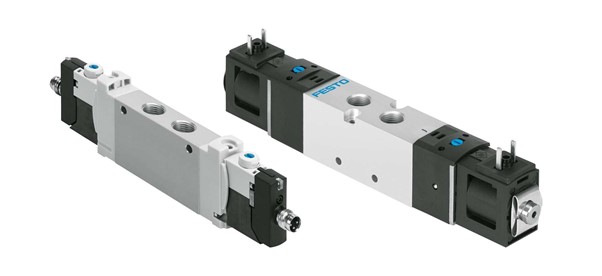If you operate a FESTO electromechanical solenoid valve as any part of a hydraulic or fluid control system, setting up a regular testing schedule is essential. Electrical test pulses ensure the internal magnetic mechanism still performs to the excellent standard expected. Here’s how it works:
What Is A Solenoid Valve?
A solenoid valve is a one-way fluid control chamber that opens partially or fully to allow liquid through on receiving a jolt of electrical current. A small electromagnet is activated, drawing a solid block upwards into a recess. Once processing finishes, another negative jolt dislodges the magnetic hold and closes the valve.
Different current durations and frequencies can send special instructions to some valves, determining behaviour. Variability, flexibility, and controllability make FESTO solenoids a superb choice for industrial fluid circuits that need sporadic bursts of liquid pressure or a sudden, temporary inflow.
How Do Solenoid Test Pulses Work?
Test pulses are a way to run ‘dry’ checks on a single solenoid valve’s magnet while the hydraulic machinery is off, without changing the solenoid’s current (usually closed) configuration.
Test pulses are substantially weaker than regular pulses. Extremely brief electrical signals sent from a handheld or mounted test unit check that the valve is reactive to input and how quickly it reacts to two (or more) positive and negative jolts.
Much like using an ammeter, the operator reads off current performance via a simple digital display. The operator can also see if any circuits are crossed or shorting (a common problem with using ageing hydraulics in confined spaces) or if the valve is reacting too slowly or fast.
By testing if the valves, millisecond-precision activators, and circuitry all work ahead of use, engineers can improve workplace safety and optimise controlled hydraulic performance. Pro-active maintenance and replacements also help prevent in-use disasters such as overflows and jams.
It’s worth noting that computer controlled solenoids aren’t usually tested with independent electrical pulses. Variable, digital, and sequential solenoid valves often have a test run feature built into their control panels instead.
How Do Test Pulses Affect FESTO Solenoid Valves?
During the test pulse process itself, you’ll probably notice some slightly strange (but nominal) behaviour from your FESTO solenoid valves. The LED ‘failsafe’ lightbulb attached to each valve should flicker briefly during pulsing. The effect is deliberate.
The flicker speed matches the rate of the pulses sent from the unit, letting you know the current is successfully passing through the valve’s internal circuitry. If the bulb fails to light, it tells technicians that something is wrong with either the contacts or wiring.
You may also hear a faint clicking noise from within the valve itself. It’s due to the electricity moving the electromagnetic and spring back and forth slightly, creating friction. Clicking is expected, nominal behaviour and shouldn’t be any cause for concern.
On rare occasions, a faulty valve may fail or open during the test phase. If you hear a clunking or moving sound while the light still comes on, check the valve and schedule a replacement immediately if need be.
Next Steps
As the UK’s official supplier for the FESTO range of fluid control products, Hydrastar are your one-stop shop for FESTO valves, testing, maintenance, and repairs. For questions relating to the FESTO range, or to discuss a specific application or project with one of our engineers, please give us a call today.



